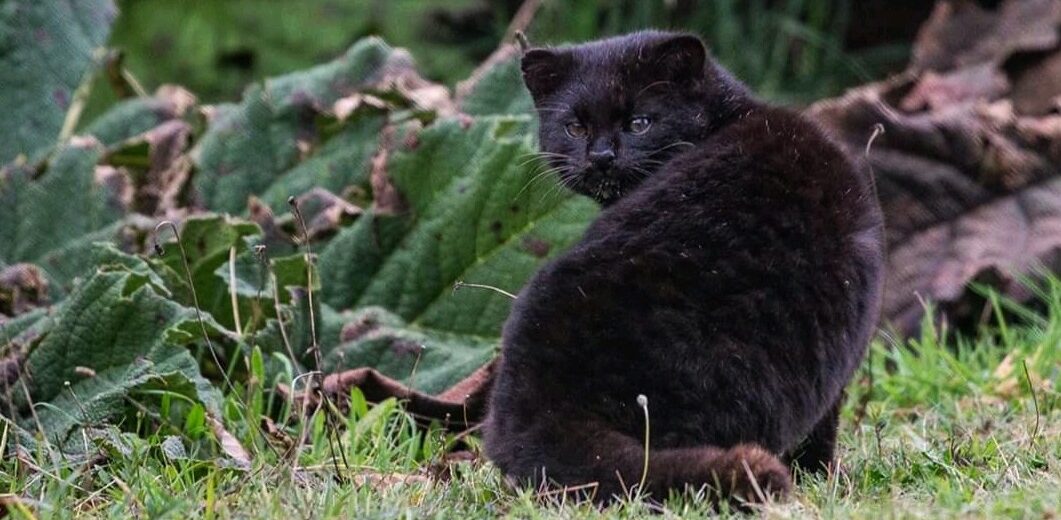
As 1 of the smallest known cats in the western hemisphere, the kodkod (aka guigna) can be found in Chile and Argentina. They prefer deciduous, temperate, moist forests, coniferous forests, evergreen temperate rainforests, and sclerophyllous (plants having hard leaves stiffened by woody tissue) scrub. There are 2 known subspecies: Leopardus guigna guigna in the south and Leopardus guigna tigrillo in the central and northern regions. Due to habitat destruction and trapping by humans, these pretty kitties are listed as Vulnerable by the IUCN. There are only an estimated 92,000 remaining and their numbers are decreasing.
First the Stats…
Scientific name: Leopardus guigna
Weight: Up to 4.9 lbs.
Length: Up to 20 inches, plus up to a 9.8 inch tail
Height: Up to 9.8 inches, at the shoulders
Lifespan: Up to 11 years
Now on to the Facts!
1.) These cats are cathemeral (active both day and night).
2.) Kodkods are both arboreal (spend their lives in trees) and terrestrial (spend their lives on the ground). But most of their time is spent in the trees.
3.) The kodkod is a carnivore (eats meat) that preys on birds, mice, rats, reptiles, and large insects.
4.) Kodkods often clash with humans due to the fact that they will sometimes hunt chickens and geese.
5.) A group of kodkods is called a clutter, destruction, clowder, or pounce.
But wait, there’s more on the kodkod!
6.) Although little is known about their reproduction habits, it is presumed that males are polygynous (mate with several females); as is the case with other cats.
7.) Females birth up to 4 kittens after up to a 78 day gestation (pregnancy).
Did you know…?
Some kodkods are born completely black. This is known as being melanistic.
8.) It is believed that females raise their young on their own.
9.) These cats are superb climbers that can scale trees that are 3 feet in diameter.
10.) There are some biologists that feel the kodkod is a subspecies of the Geoffroy’s cat.
But wait, there’s still more on the kodkod!
11.) Their main predators are humans and dogs.
12.) The tongues of cats are covered with rows of spikes, called papillae, that are used for scraping meat off bones and removing hair from hides. They also aid in scooping up water, when drinking.
13.) The pupils of the kodkod, as is the case with all small cats, close to slits, whereas the pupils of large cats close to circles, like in humans.
14.) Males patrol an area of up to 0.97 square miles, where females patrol an area of just 0.27 square miles.
Now a Short Kodkod Video!
Be sure to share & comment below! Also, check out the Critter Science YouTube channel. Videos added frequently!
Want to suggest a critter for me to write about? Let me know here.



